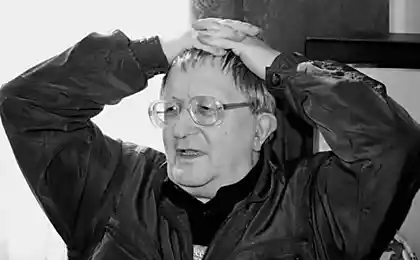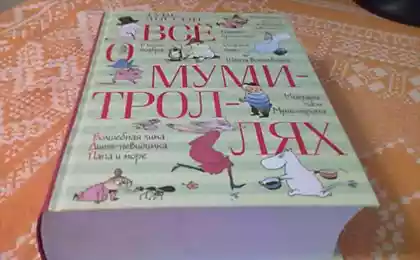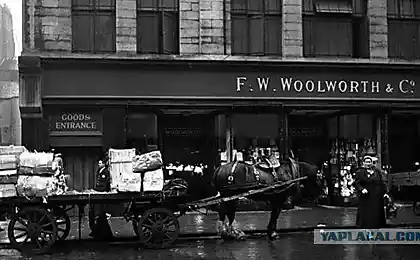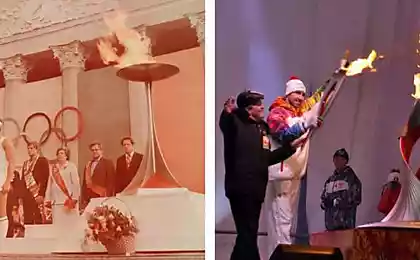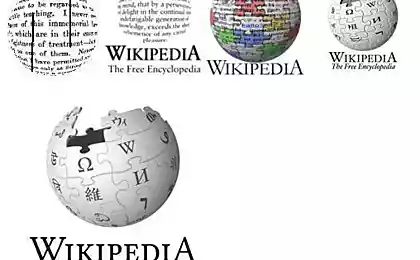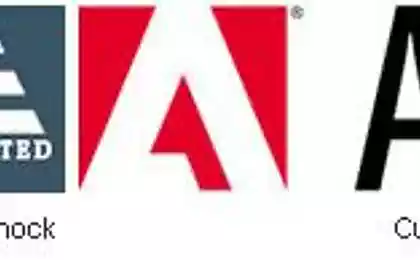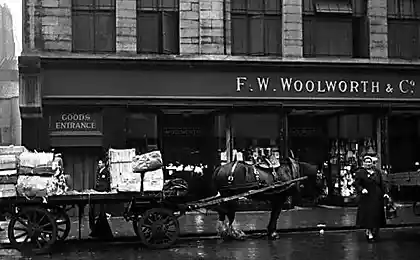725
Who came up with the price tags (8 photos)
We are so accustomed to the price tag, and supermarkets that can no longer be imagined without them modern trade.
We think that it has always been. No, no, and again no!
The name of the inventor price tag history, fortunately preserved.
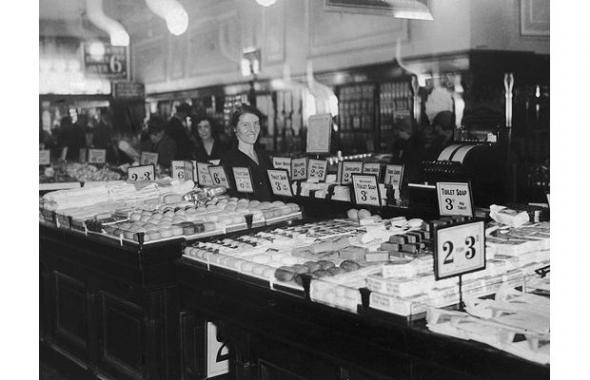
His name was Frank Woolworth, a shy country lad who became a multimillionaire. It was he who came up with the price tag, display of goods with free access to customers, discounts for small groups of goods, sales and more. And the stores where used his ideas became known supermarkets.
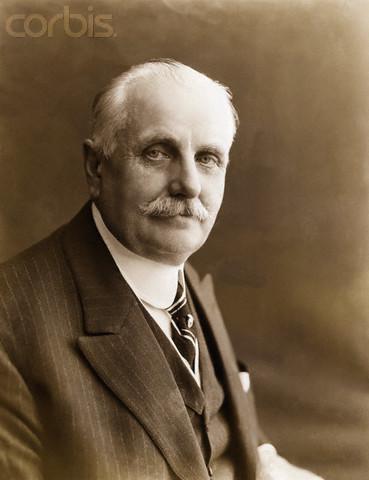
Before Frank Woolworth price of goods in shops not mentioned. An experienced dealer "by eye" determined the solvency of the buyer and on this basis, called the price. The buyer, going to the store can only see items behind the seller, and selecting items, ask the price. If the price does not suit the buyer, or trading, or simply moved away from the counter, taking with them the money that would be left in the shop if ...
This invention is the price tag put an end to the dominance of sellers, turned the entire world trade. More than a hundred years the name Woolworth, which has become a household word, is not the name, but a certain type of shop where selling is not the seller to the buyer, and the buyer - to himself!
Frank Woolworth was born in the village and up to 21 years just working on the ground with their parents. Garden - the market for the purchase of necessary economic goods back garden ... At 21, he decided that this life is not for him, and fled to the small town of Lancaster, Pennsylvania.
Lacking education and profession, I got a salesman in a small shop. The owner is constantly reproached Man in worthlessness and incompetent, and the silent shy Frank just sighed and blushed. He knew that the career of the seller - not his strong point. Answer customer questions about the price and quality of goods was for him a true meal. He is so shy visitors what had happened even nervous attacks, one of which almost cost him his life.
Master is simply enraged! He said that his patience snapped, and he gives one last chance ... this x th employee. The test was simple. Frank had to sell himself one day, and if the revenue is less than the normal day, the boss fires him.
Staying alone in the store, to entice buyers to show and to praise the goods traded, defending every cent. All of this Frank is not only loved, but frankly afraid!
The day Frank came into the store before the opening. He attached to all goods that are allowed to do discount paper with the lowest possible cost (prototype of the modern price tag). All unsold goods piled up in the warehouse, he put on a huge table, attach the plate with the inscription "All five cents." Table he placed near a window so that the goods, and the plate was visible from the street. He opened a shop. In the words of Frank "... I slipped into the store and ran behind the counter, shaking with fear, which is unusual," decoration "inside the store offend customers."
However, buyers are seeing the sign "All five cents," not offended. Moreover, all the stale product was sold out in a few hours! Buyers saw written on the product price is not traded, but just pointing the finger at the goods and gave the money. Revenue store one day a bit has not held up to a week! Flushed with success, Frank retired from the owner, took the money and opened his own shop. Debt he gave even faster than expected.
Appetite comes with eating. Frank opened another shop - in Philadelphia, after calculating the favorite route to stroll and renting a building there. This point of sale for over a year has allowed Frank to earn over a million dollars. All products available in the store were on the shelves, and each customer can touch and evaluate them without feeling the pressure of the seller. So more than a hundred years ago was born the American system of self-service. And the main feature of trade was the obligatory presence of a large group of products at one price - 5 cents. Many shops and Woolworth called Five Cent Market.
Woolworth chain in 1886 has consisted of seven "nickels" stores. In 1895 their number reached 28, and five years later - 59. C business growth Woolworth improved methods and forms of sales and customer service. It has developed its own strategy, contrary to the unwritten laws of the then trade. First, it places the goods on display with the price (a dozen years such innovation does not inherit other sellers, the price tag for not recognizing the right to life). A calculation of the goods is changed every two weeks. Secondly, it pays its workers much less than the other hosts, but not demanded of them that demanded the other. Woolworth quite willingly hired unskilled and inexperienced workers, forced them to persuade customers to buy goods. The counter and the ticket office located in the back of the store. Clients served by only one seller, whose job was to pack a purchase, be sure to smile and thank the customer. Third, Woolworth constantly arranged giveaways once noticed that the demand for a particular commodity falls, and this too was a novelty, because the first initiator cheaper goods has always advocated the buyer and the seller, and have agreed to. Now it turns out the other way around - and everyone was a winner. Fourth, Woolworth specialized in small ways, winning by turns, multiplied by the sale of five or ten cents.
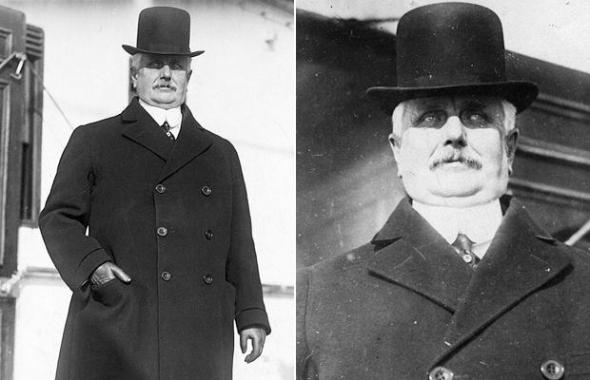
Leaving the last image of the bungler-loser, Woolworth failed to impress those around her commercial instinct. One of the first in the world, he began to practice the conclusion of exclusive contracts with suppliers, giving up the services of intermediaries. He always paid cash, which made it particularly attractive in the eyes of consumers. Once, when he saw that penknives are in demand, Frank went to the producers and negotiated a reduced price for the largest wholesale party. The next time he bought Christmas toys for $ 25 thousand. Christmas was celebrated in those years with a much smaller scale than today, and decorations are not in great demand. But Frank has started on the cheap goods, and toys sold out instantly. He could count every cent: scolded workers for the use of expensive wrapping paper, he insisted on saving the most severe lighting and coal for heating.
By 1900, the trade turnover reached $ 5 million, and five years later tripled. In 1919 the "empire little things" more than a thousand stores in the US, Canada and England. Status of the Woolworth's was $ 65 million. He lived with his family in a luxurious mansion, successfully married off three daughters, Barbara adored granddaughter. As a monument to his well-being, gained just by pennies, and thankful in 1913 Woolworth erected in New York's highest skyscraper while Woolworth-building. The observation deck at the top "of the temple trade" thousands of people visit every day, and almost none of them did not leave without buying. In 1915, Sholem Aleichem, then moved to the United States, put in the mouth of one of his characters a story about America: "Is there a little house, called the" Woolworth "pipe goes into the clouds, and it is even higher, it has hundreds of stories." (Actually Woolworth-building was a 60-storey.) Vladimir Mayakovsky, who visited in 1925 in New York with the social order to expose "his prepohabie capital" skyscraper inspired by the poem "The Lady and the Woolworth»:
Broadway sdurel. Begni and Gulevo.
Houses are cut off from heaven, and hang.
But even between them notice Woolworth,
Corsetry box floors sixty.
None other than his head thrown back, Mayakovsky believed floors, violating the principle of the class, "the Soviet own pride, look down on the bourgeoisie».
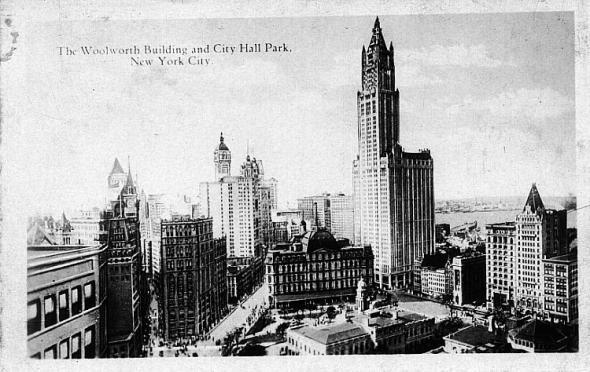
In the early twentieth century. Woolworth retail chain stretches around the world. They were no longer "nickels" shops and large supermarkets - with their commodity clarity, reasonable prices and independently buyers. And inheriting Woolworth, world trade, finally felt the benefits they derived formula does not need to communicate with the buyer the seller, the buyer and goods. Only the energy of their live contact works wonders. But by the end of the twentieth century. Woolworth Company is outdated and ceased to exist, giving way to new principles of the organization of retail space and display of goods.
When a young Frank Woolworth enthusiastically was setting products on the shelf, he did not expect any miracles century later will work he created merchandising, what unimaginable ways to stimulate retail sales will trade. For example, more revolutions now gaining specialized companies, professionally select music for mini- and megamarket. Various departments of "sound" in his own way. And it allows you to direct customers to the proper routes to encourage the purchase of certain products and to eliminate the queue. Today it is the whole direction of profitable consulting business. The cost of the acoustic equipment and services for the selection of music for a medium-sized supermarket more than $ 20 thousand.
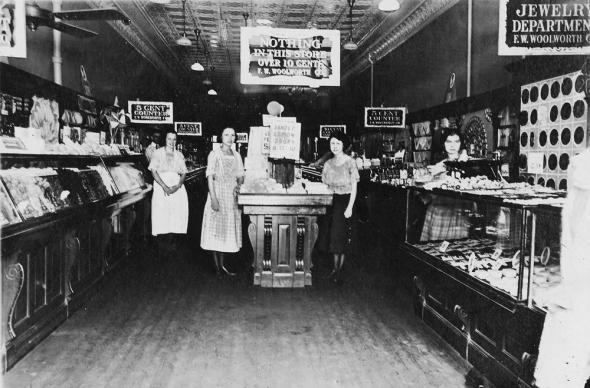
Undoubtedly, Woolworth be impressed and metamorphosis, which has undergone a price tag. For example, the invention of electronic, allowing customers to focus not only in price but also quality, the composition of the goods, discounts, etc. Or the last squeak - speaking tags. Buyer, look right product, click on the price tag, and the voice of a famous politician or actor talks about little things more. And no shyness, no panic at the sight of the buyer ...
We think that it has always been. No, no, and again no!
The name of the inventor price tag history, fortunately preserved.

His name was Frank Woolworth, a shy country lad who became a multimillionaire. It was he who came up with the price tag, display of goods with free access to customers, discounts for small groups of goods, sales and more. And the stores where used his ideas became known supermarkets.

Before Frank Woolworth price of goods in shops not mentioned. An experienced dealer "by eye" determined the solvency of the buyer and on this basis, called the price. The buyer, going to the store can only see items behind the seller, and selecting items, ask the price. If the price does not suit the buyer, or trading, or simply moved away from the counter, taking with them the money that would be left in the shop if ...
This invention is the price tag put an end to the dominance of sellers, turned the entire world trade. More than a hundred years the name Woolworth, which has become a household word, is not the name, but a certain type of shop where selling is not the seller to the buyer, and the buyer - to himself!
Frank Woolworth was born in the village and up to 21 years just working on the ground with their parents. Garden - the market for the purchase of necessary economic goods back garden ... At 21, he decided that this life is not for him, and fled to the small town of Lancaster, Pennsylvania.
Lacking education and profession, I got a salesman in a small shop. The owner is constantly reproached Man in worthlessness and incompetent, and the silent shy Frank just sighed and blushed. He knew that the career of the seller - not his strong point. Answer customer questions about the price and quality of goods was for him a true meal. He is so shy visitors what had happened even nervous attacks, one of which almost cost him his life.
Master is simply enraged! He said that his patience snapped, and he gives one last chance ... this x th employee. The test was simple. Frank had to sell himself one day, and if the revenue is less than the normal day, the boss fires him.
Staying alone in the store, to entice buyers to show and to praise the goods traded, defending every cent. All of this Frank is not only loved, but frankly afraid!
The day Frank came into the store before the opening. He attached to all goods that are allowed to do discount paper with the lowest possible cost (prototype of the modern price tag). All unsold goods piled up in the warehouse, he put on a huge table, attach the plate with the inscription "All five cents." Table he placed near a window so that the goods, and the plate was visible from the street. He opened a shop. In the words of Frank "... I slipped into the store and ran behind the counter, shaking with fear, which is unusual," decoration "inside the store offend customers."
However, buyers are seeing the sign "All five cents," not offended. Moreover, all the stale product was sold out in a few hours! Buyers saw written on the product price is not traded, but just pointing the finger at the goods and gave the money. Revenue store one day a bit has not held up to a week! Flushed with success, Frank retired from the owner, took the money and opened his own shop. Debt he gave even faster than expected.
Appetite comes with eating. Frank opened another shop - in Philadelphia, after calculating the favorite route to stroll and renting a building there. This point of sale for over a year has allowed Frank to earn over a million dollars. All products available in the store were on the shelves, and each customer can touch and evaluate them without feeling the pressure of the seller. So more than a hundred years ago was born the American system of self-service. And the main feature of trade was the obligatory presence of a large group of products at one price - 5 cents. Many shops and Woolworth called Five Cent Market.
Woolworth chain in 1886 has consisted of seven "nickels" stores. In 1895 their number reached 28, and five years later - 59. C business growth Woolworth improved methods and forms of sales and customer service. It has developed its own strategy, contrary to the unwritten laws of the then trade. First, it places the goods on display with the price (a dozen years such innovation does not inherit other sellers, the price tag for not recognizing the right to life). A calculation of the goods is changed every two weeks. Secondly, it pays its workers much less than the other hosts, but not demanded of them that demanded the other. Woolworth quite willingly hired unskilled and inexperienced workers, forced them to persuade customers to buy goods. The counter and the ticket office located in the back of the store. Clients served by only one seller, whose job was to pack a purchase, be sure to smile and thank the customer. Third, Woolworth constantly arranged giveaways once noticed that the demand for a particular commodity falls, and this too was a novelty, because the first initiator cheaper goods has always advocated the buyer and the seller, and have agreed to. Now it turns out the other way around - and everyone was a winner. Fourth, Woolworth specialized in small ways, winning by turns, multiplied by the sale of five or ten cents.

Leaving the last image of the bungler-loser, Woolworth failed to impress those around her commercial instinct. One of the first in the world, he began to practice the conclusion of exclusive contracts with suppliers, giving up the services of intermediaries. He always paid cash, which made it particularly attractive in the eyes of consumers. Once, when he saw that penknives are in demand, Frank went to the producers and negotiated a reduced price for the largest wholesale party. The next time he bought Christmas toys for $ 25 thousand. Christmas was celebrated in those years with a much smaller scale than today, and decorations are not in great demand. But Frank has started on the cheap goods, and toys sold out instantly. He could count every cent: scolded workers for the use of expensive wrapping paper, he insisted on saving the most severe lighting and coal for heating.
By 1900, the trade turnover reached $ 5 million, and five years later tripled. In 1919 the "empire little things" more than a thousand stores in the US, Canada and England. Status of the Woolworth's was $ 65 million. He lived with his family in a luxurious mansion, successfully married off three daughters, Barbara adored granddaughter. As a monument to his well-being, gained just by pennies, and thankful in 1913 Woolworth erected in New York's highest skyscraper while Woolworth-building. The observation deck at the top "of the temple trade" thousands of people visit every day, and almost none of them did not leave without buying. In 1915, Sholem Aleichem, then moved to the United States, put in the mouth of one of his characters a story about America: "Is there a little house, called the" Woolworth "pipe goes into the clouds, and it is even higher, it has hundreds of stories." (Actually Woolworth-building was a 60-storey.) Vladimir Mayakovsky, who visited in 1925 in New York with the social order to expose "his prepohabie capital" skyscraper inspired by the poem "The Lady and the Woolworth»:
Broadway sdurel. Begni and Gulevo.
Houses are cut off from heaven, and hang.
But even between them notice Woolworth,
Corsetry box floors sixty.
None other than his head thrown back, Mayakovsky believed floors, violating the principle of the class, "the Soviet own pride, look down on the bourgeoisie».

In the early twentieth century. Woolworth retail chain stretches around the world. They were no longer "nickels" shops and large supermarkets - with their commodity clarity, reasonable prices and independently buyers. And inheriting Woolworth, world trade, finally felt the benefits they derived formula does not need to communicate with the buyer the seller, the buyer and goods. Only the energy of their live contact works wonders. But by the end of the twentieth century. Woolworth Company is outdated and ceased to exist, giving way to new principles of the organization of retail space and display of goods.
When a young Frank Woolworth enthusiastically was setting products on the shelf, he did not expect any miracles century later will work he created merchandising, what unimaginable ways to stimulate retail sales will trade. For example, more revolutions now gaining specialized companies, professionally select music for mini- and megamarket. Various departments of "sound" in his own way. And it allows you to direct customers to the proper routes to encourage the purchase of certain products and to eliminate the queue. Today it is the whole direction of profitable consulting business. The cost of the acoustic equipment and services for the selection of music for a medium-sized supermarket more than $ 20 thousand.

Undoubtedly, Woolworth be impressed and metamorphosis, which has undergone a price tag. For example, the invention of electronic, allowing customers to focus not only in price but also quality, the composition of the goods, discounts, etc. Or the last squeak - speaking tags. Buyer, look right product, click on the price tag, and the voice of a famous politician or actor talks about little things more. And no shyness, no panic at the sight of the buyer ...







